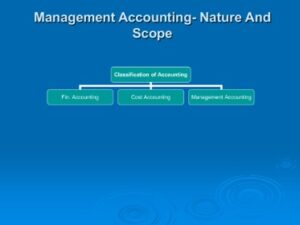
Be sure to rename it versus using the auto-generated (“suggested”) name to avoid cluttering up your rule list when searching later. Be clear and concise when naming the rule and you’ll save yourself a headache down the road.
To define a rule, one can specify conditions based on transaction data such as amount, payee, category, or memo. After defining the conditions, specific actions can be assigned to the rule to ensure that when a transaction meets the defined criteria, it is automatically categorized, tagged, or assigned to a particular account. Modifying the rule’s conditions and actions in QuickBooks Online involves adjusting the criteria and instructions that govern automated transaction categorization and management. It’s important to thoroughly analyze the criteria and actions of each rule to determine the necessary modifications. After selecting the rule, users can then proceed to modify the criteria and actions according to the specific requirements for accurate transaction categorization and management. By confirming the deletion of a rule in QuickBooks Online, users ensure that any previously set conditions, such as categorizing transactions or automatically assigning specific actions, are permanently removed.

How To Create Rules In QuickBooks Online?
This process streamlines the management of transactions, allowing for greater accuracy and control over financial records. To modify a specific rule, users can click on the rule and then select ‘Edit.’ This will allow them to customize the rule criteria, such as payee, amount, category, and more. By adjusting these parameters, users can ensure that their financial data is accurately organized according to their specific business needs.
These customized instructions integrate seamlessly with QuickBooks Online’s broader tools for financial management, contributing to a more efficient and personalized user experience. This customization process provides a method for tailoring the system’s responses to specific transaction attributes, such as amount, payee, or category. By adjusting these conditions, users can ensure that transactions are automatically assigned to the correct accounts, streamlining bookkeeping efforts. By navigating to the Banking menu and selecting the “Banking” section, users can access the “Rules” tab. Once there, they can view, add, edit, or delete rules to streamline transaction processing. Choosing actions for the rule in QuickBooks Online allows users to select specific instructions that determine how transactions are managed and categorized automatically based on predefined criteria.
Delete a Rule
This functionality is extremely useful for businesses wanting to streamline their a step-by-step guide to catching up on your bookkeeping accounting processes and ensure accuracy in recording financial transactions. To access and modify existing rules, users can navigate to the ‘Banking’ or ‘Transactions’ tab in QuickBooks Online and select ‘Banking Rules’. Selecting the rule to change in QuickBooks Online allows users to identify specific automated instructions and modify their criteria and actions for transaction management, facilitating tailored financial data organization. Staying proactive in rule management enhances the efficiency and reliability of accounting processes, positioning businesses to make informed decisions based on accurate financial data. Regularly exploring the various tutorials and guides provided by QuickBooks Online can empower users to maximize the capabilities of the software for better financial management.
Your projects are processes,
This comprehensive insight will ensure that you are fully informed about the implications of undoing a rule in QuickBooks Online. Ready to streamline your accounting processes and elevate your QuickBooks experience? At some point, you’ll probably need to review your existing bank rules and make some changes. This step is also very important as it will decide which account on your books the transaction will go to. If you are unsure of which account to use, search for the vendor name and find how the transaction was previously categorized.
- Creating rules in QuickBooks Online involves setting up automated instructions to categorize and manage transactions, providing a systematic approach to organizing financial data.
- If you are unsure of which account to use, search for the vendor name and find how the transaction was previously categorized.
- Therefore, it is important to carefully analyze the implications of undoing a rule on the financial tracking system to avoid discrepancies and maintain the integrity of financial management practices within QuickBooks Online.
- By adjusting these parameters, users can ensure that their financial data is accurately organized according to their specific business needs.
Accessing the Rules List
By staying abreast of these updates, businesses can prevent the need for undoing a rule, which can disrupt the flow of operations and lead to discrepancies in financial reporting. This action could have significant consequences for the overall financial management of the company. Lifting the rule might lead to possible reconciliation errors and reporting inaccuracies, impacting the integrity and transparency of financial records. Given the essential role of QuickBooks Online in ensuring compliance payroll accounting basics with financial regulations and maintaining oversight, the decision to delete the rule requires careful consideration.
By adopting these proactive measures, users can reduce the likelihood of having to undo a rule and ensure efficient financial management within QuickBooks Online. This process is essential to maintain accurate financial reporting and ensure that all transactions are correctly accounted for. By aligning the rule with the latest financial operations and data, it allows for better tracking and analysis of income, expenses, and overall financial health.
After you create an auto-add rule, any transactions on the For review tab that meet the conditions are automatically added. Auto-add rules run when you sign in, upload a file, or create or modify a new auto-add rule. Once the rule is removed or edited, be sure to review your financial transactions to ensure that they accurately reflect the changes made to the rule. By efficiently managing and removing unnecessary rules, users can enhance the accuracy and efficiency of their transaction recording and categorization in QuickBooks Online. In our last blog, we covered how to tackle shared transactions in QBO; this month, we’re covering banking rules. When used properly, rules can automate the categorization of the majority of your recurring expense transactions, transfers, and deposits, saving you what could be a few hours, or direct vs indirect cash flow even months.

Vélemény, hozzászólás?